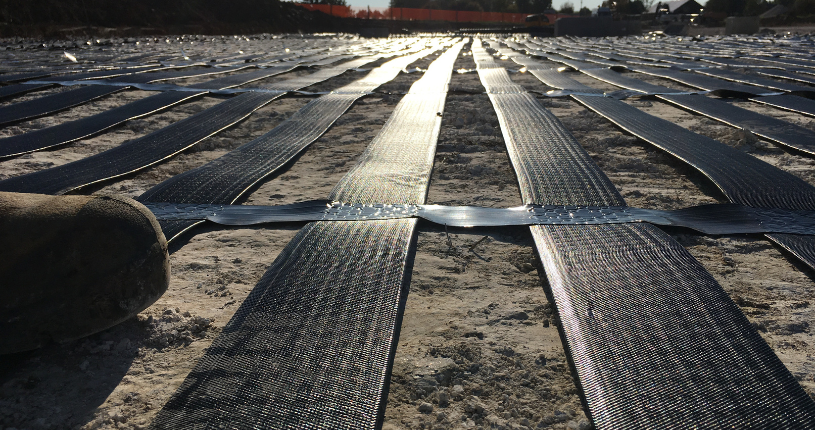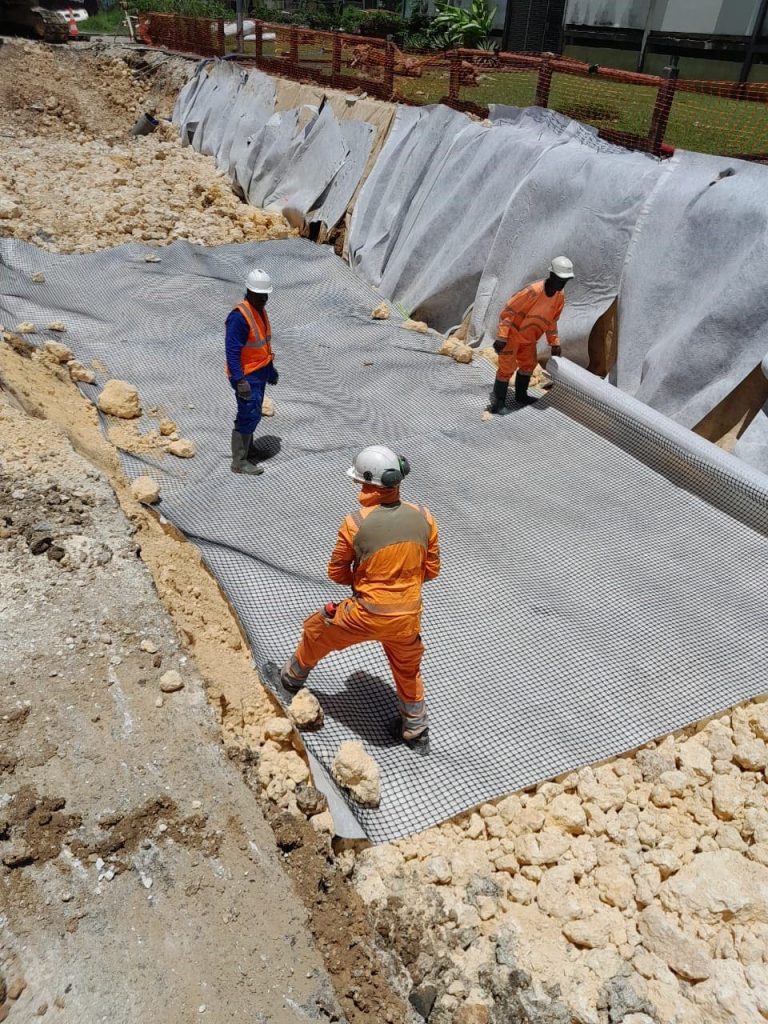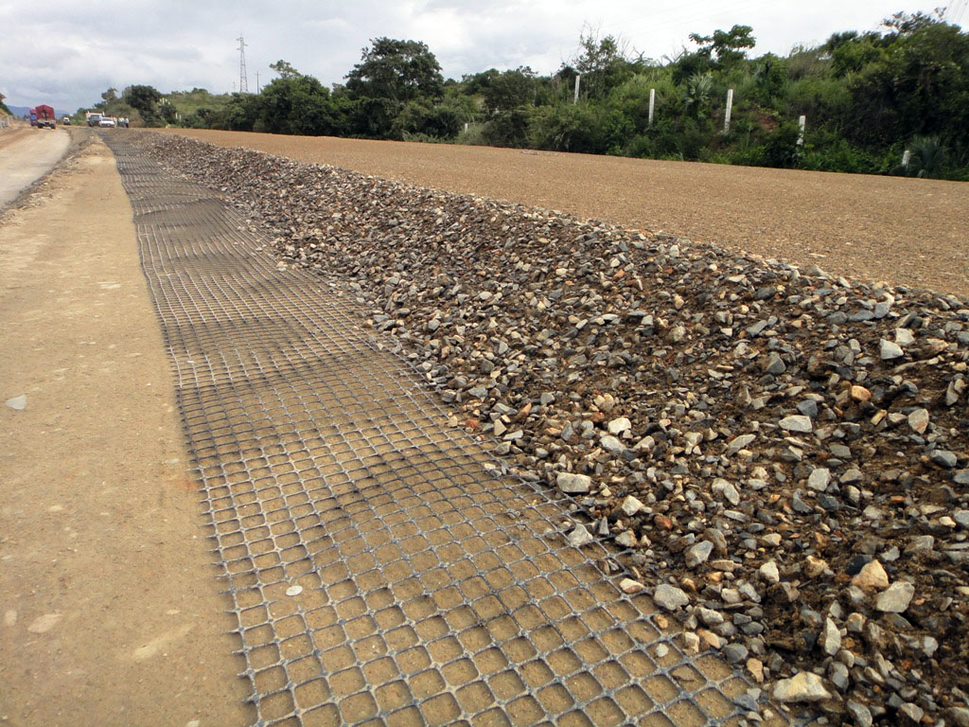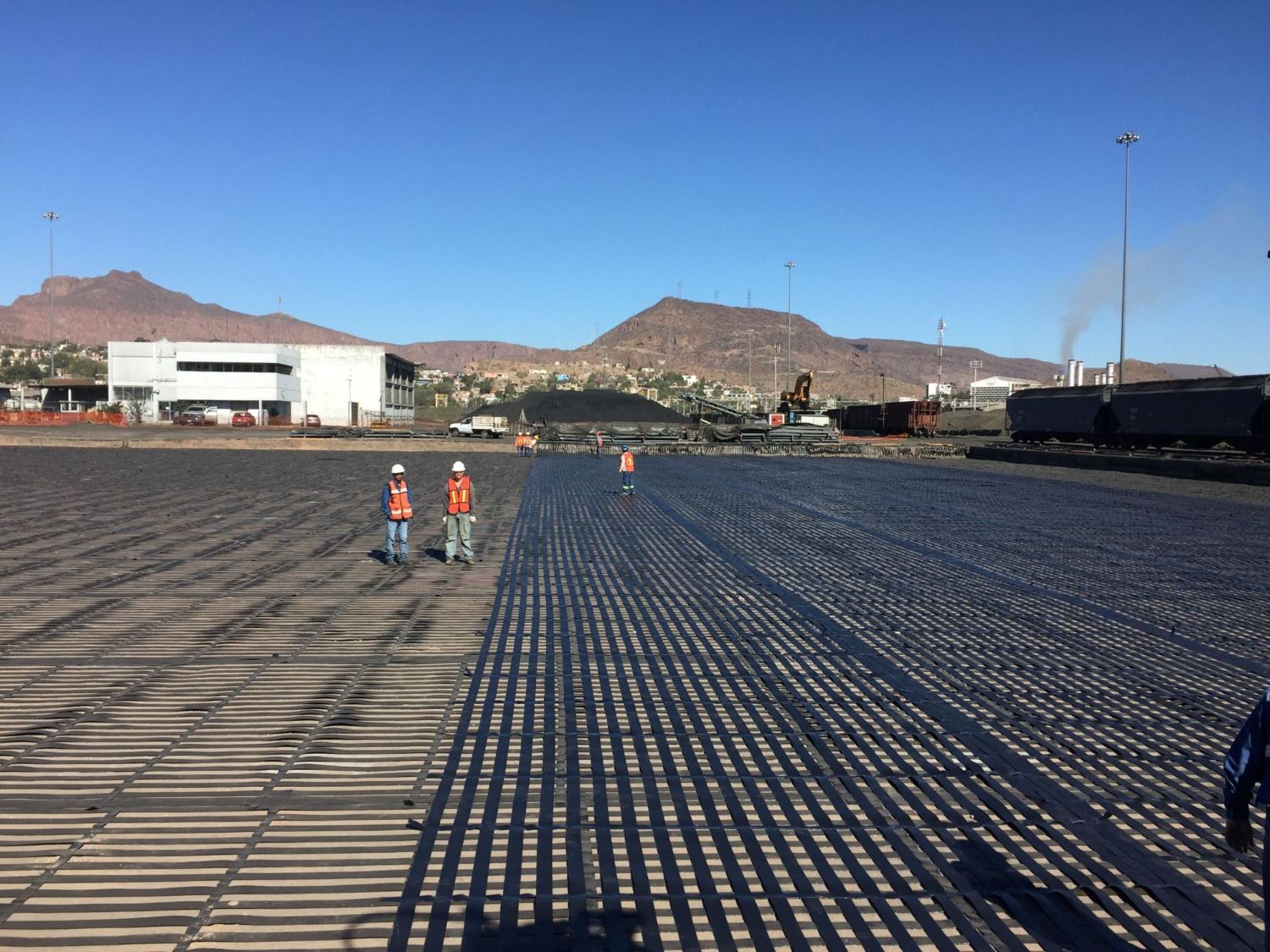Complete Guide to Geogrid: Functions, Types, and Applications
What is a Geogrid?
Geogrid is a high-strength geosynthetic material with an open grid-like structure used to reinforce soils and aggregates. It plays a vital role in civil, geotechnical, and transportation engineering, especially in areas with soft or weak subgrades.
Made from durable polymers such as polypropylene, polyester, or HDPE, geogrids are designed to interlock with soil or aggregate particles, improving load distribution, reducing settlement, and increasing overall structural integrity.
Types of Geogrids Offered by Maccaferri
Monoaxial Geogrid
Monoaxial geogrids are manufactured using high-strength polymers such as HDPE or polyester, stretched in one direction to maximize tensile performance. These geogrids are specifically designed for soil reinforcement in wall and slope applications, where forces act predominantly in a single direction.
Key Benefits:
- High tensile capacity in the machine direction
Designed to resist tension along a single axis, monoaxial geogrids are ideal for applications like retaining walls and slopes, where stress is mainly applied in one direction. This focused strength ensures long-term structural stability. - Allows steep slope and vertical wall construction
The high strength-to-weight ratio enables the construction of near-vertical walls or steep embankments safely and efficiently maximizing usable land in constrained areas. - Cost-effective alternative to traditional concrete or masonry walls
Compared to rigid wall systems, geogrid-reinforced soil structures require fewer materials and less labor, reducing overall construction costs while offering similar performance. - Long-term resistance to chemical and biological degradation
Manufactured from durable polymers like HDPE or polyester, uniaxial geogrids are highly resistant to corrosion, pH extremes, and biological attack, making them suitable for long-term or permanent installations.
Typical applications:
- Mechanically Stabilized Earth (MSE Walls)
- Steep slopes and embankments
- Bridge abutment support structures
- Landfill berms and vertical expansion zones
Check out all our Monoaxial Geogrid Products here


Biaxial Geogrid
Biaxial geogrids are formed through a process of extrusion, punching, and stretching of polypropylene sheets. The resulting grid structure offers balanced strength in both directions, making it highly effective for subgrade stabilization and load distribution.
Key Benefits:
- Improves load-bearing capacity of soft and unstable soils
Designed to resist tension along a single axis, uniaxial geogrids are ideal foBy distributing loads evenly in both directions, biaxial geogrids stabilize weak subgrades, allowing construction on soils that would otherwise require costly treatment or removal. - Reduces thickness requirements for base layers
With better load spread and confinement of aggregates, you can achieve the required bearing capacity with a thinner layer of base material, saving time and cost. - Controls rutting and differential settlement
Biaxial geogrids help hold aggregate layers in place, preventing displacement and settlement under repeated traffic loads—especially important for roads and work platforms. - Enhances pavement performance and lifespan
By reinforcing the base and minimizing deformation, geogrids contribute to longer-lasting pavements that need less frequent maintenance.
Typical applications:
- Road and highway base reinforcement
- Parking lots and airport taxiways
- Temporary site access roads and working platforms
- Railway ballast reinforcement
Check out all our Biaxial Geogrid Products here


Key Functions of Geogrids
Geogrids are used in various infrastructure applications due to their unique structural and mechanical advantages:
Reinforcement
Increases tensile strength of soil, improving the stability of embankments, retaining structures, and slopes.
Stabilization
Locks aggregates in place, improving compaction and reducing deformation in pavements and unpaved roads.
Load Distribution
Spreads applied loads over a wider area, reducing pressure on weak subgrades and minimizing settlement.
Separation & Erosion Control
When used with geotextiles, geogrids prevent intermixing of materials and reduce erosion under dynamic loading.
Get a free consultation with our team today!
Our team of experts is ready and eager to assist you: whether you have questions about our latest products, or seek customized solutions for your specific challenges, we’re just a click or call away.

